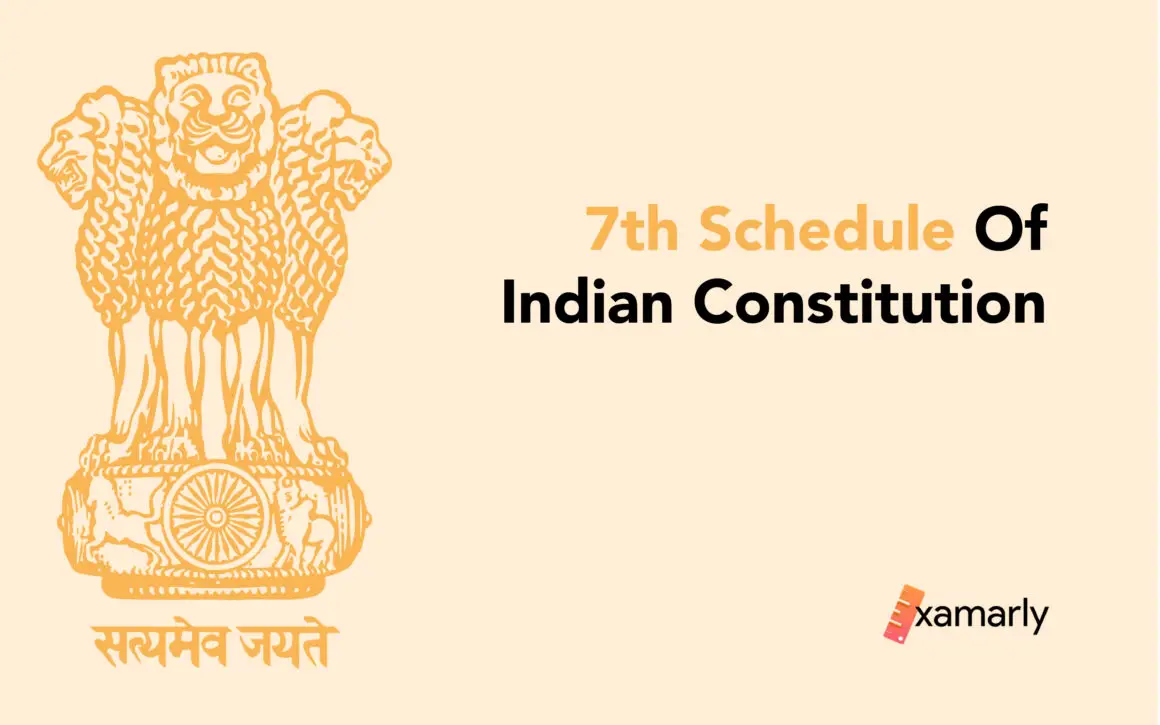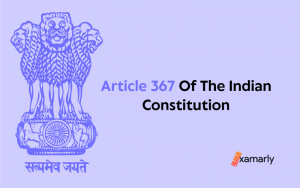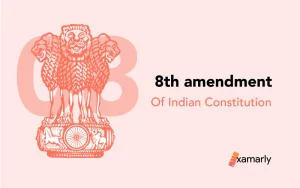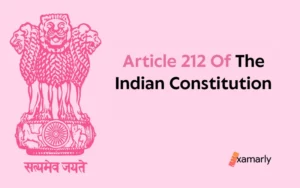The 7th Schedule of Indian Constitution is a provision under Article 246. It outlines the legislative powers of different states. This schedule also defines powers for the executive, judiciary, and legislature. Its purpose is to ensure that all people have equal opportunities to enjoy democracy’s benefits. This provision is one of India’s most important.
Read this article further to gain the knowledge about 7th schedule of Indian constitution. This article will be beneficial for the preparation of UPSC Exam.
7th Schedule Of Indian Constitution And Article 246
The 7th schedule of Indian Constitution highlights the division of power dispersal scheme. The distribution of powers takes place between the state and the union. This is specified under Articles 245 and 246. The plan has three lists, the State List, the Union List, and the Concurrent List. The three lists and the current Seventh Schedule were included in that 1935 piece of legislation.
State Listing items are exclusive to the state governments, while Union List items fall under the jurisdiction of the Parliament. The Concurrent Listing lists items that can be legislated by the Union and the states. It should include the central government’s budget. The Government of India Act of 1936 gave us the principles of the Seventh Schedule.
Also Read: 10th Schedule Of Indian Constitution
Union List
- The Union List is a list of 100 (earlier it was 97) topics where the Union or Center government has exclusive powers and the final say in decision-making. It includes nationally important subjects. Defense, foreign affairs, banking, railways, Inter-state trade, atomic energy, postal services, etc.
- The Union Listing contains more subjects than the state listing. Moreover, there are more topics in it than the number of topics in the combination of State and Concurrent lists. It exclusively uses armed forces or other entities. These are under the Union’s control to support the civil power in any State. Over such matters, the union government’s role comes into light through its power of exclusive jurisdiction.
- The Union Listing consists of 15 topics, and only Parliament has the right to impose taxes on them. The Supreme Court’s authority and jurisdiction over issues on the Union List may be enlarged by Parliament. The 88th Amendment adds a new subject to the Union List termed “taxes on service.”
- According to the Indian Constitution, in a situation of a dispute, the Union lists grab priority. A state may receive powers and be subject to obligations under a statute. It should be established by Parliament. It should focus on a topic included in the Union Listing, or it may receive powers and duties directly from the government level and central forces.
State List
- The state listing includes 61 topics. The state legislatures are allowed to regulate these topics only.
- Public order, prisons, public health, manufacturing, agricultural education and research, fisheries, state public services, air forces, mineral resources, and other topics are all specified under the state list.
- On the topics included in the State List of the Indian Constitution, only the State legislatures have the authority to enact laws. All this, yet, is only conceivable in everyday situations.
- The State List contains topics on which Parliament may pass laws in the national interest under Article 249 of the Constitution.
- Parliament may legislate on subjects listed on the State Listing under three conditions that include-
- 1. In case the resolution is passed by the Rajya Sabha,
- 2. When a national emergency occurs (Article 250)
- 3. When at least two states approve a resolution. They asked Parliament to pass laws on issues covered by the State List.
- The law relating to state resolutions only applies to those states that have done so. Moreover, additional states may do the same by passing an identical resolution.
- Only the Parliament, not the states, has the authority to change or abolish a law that the Parliament passed in response to a state resolution:
- During the President’s Rule
- To carry out international agreements.
- The State Listing outlines national, state, and local issues and issues that support a range of interests.
- Twenty topics on the State List are only subject to taxation by state legislatures.
- A unique clause for the National Capital was introduced in the 69th Constitutional Amendment Act of 1991. Public order, police, and land are the three topics on the State List that the Delhi government is not allowed to pass laws on.
Concurrent List
- 52 topics on the concurrent listing are governed by both the federal government and state legislatures.
- Criminal law, preventive detention, criminal procedure, trade unions, civil procedures, industrial, population control, cruelty to animals, family planning, and many more.
- The above areas are all included in the concurrent listing of topics according to the Indian constitution.
- The 47 items on the list are all subject to legislation.
- It is subjected to both the state legislature and the union parliament because both have concurrent power and legislative authority.
- The 42nd Amendment Act of 1976 transferred the five topics, except the Supreme Court and High Courts, from the State List to the Concurrent Listing. The five topics included education, forests, the safety of wild animals, weights and measurements, and justice administration.
- The Australian Constitution served as a model for the Indian Constitution’s “Concurrent List” concept.
- The Concurrent Listing contains a list of topics on which both the Central Government and the State Government may pass legislation.
- The concurrent listing details the topics for which national legislation uniformity is preferred but not necessary.
- Three topics on the Concurrent Listing are subject to taxation by both the federal and state governments.
Evolution of 7th Schedule
- Any laws about any of the items listed in the Union List must be made by the Parliament alone. Currently, this listing has 100 topics (originally 97 subjects).
- In “normal circumstances,” only the state legislature has the authority to enact laws about any of the issues listed in the State Listing. This currently has 61 subjects.
- Any of the topics listed in the Concurrent Listing may be the subject of legislation from both the Parliament and state legislatures. Currently, this listing contains 52 topics.
- Following the 42nd Amendment Act of 1976, five topics were moved from the State Listing to the Concurrent List.
- Even if an issue is on the State Listing, Parliament has the authority to pass laws of it for any area of India’s territory that is not part of a state. The Union Territories or the Acquired Territories are mentioned in this clause.
- About the goods and services tax, a specific provision was provided by the 101st Amendment Act of 2018. On the goods and services tax imposed by the Union or the State, the Parliament and state legislatures have the authority to pass laws. Additionally, the parliament has the only authority to enact laws about the goods and services tax. It happens in cases where the provision of products or services, or both, occurs during interstate trade or commerce.
- The Parliament has the authority to enact legislation about residual issues, or those not included in any of the three lists. The ability to charge residuary taxes is a part of this legislative power.
- The foregoing system makes it obvious that the Union Listing includes issues of national significance. The State Listing, so, includes the issues of regional and local significance and those that allow for a diversity of interests.
- The concurrent listing includes the topics where having uniform laws across the nation is desired but not necessary. As a result, it supports both consistency and diversity.
- An enumeration of three categories was allowed under the Government of India Act of 1935.
- The structure of the current Constitution is like that of this act. With one exception: under this act, the governor-general of India received residual powers instead of the federal or provincial legislatures.
- The Union List’s dominance over the State Listing, and the Concurrent List’s dominance over the State Listing, and are guaranteed by the Constitution.
- As a result, the Union List should take precedence over the State Listing in cases where they overlap. The Union List should again take precedence over the Concurrent List in the event of a conflict. The Concurrent List should take precedence over the State Listing whenever there is a dispute.
- If there is a disagreement between federal law and state law on a topic listed in the Concurrent List, federal law will take precedence. There is, yet, one exception. If the state law has been submitted to the president for review and received his approval, it takes precedence in that state. But, the Parliament would still have the authority to amend that law by passing another one on the same subject later.
- Let us consider the 1983 Sarkaria Commission, a detailed examination of the concurrent listing. It revealed no compelling reason to change the constitution to allow for the transfer of the concurrent list to the state listing. But, it did acknowledge that the states should be consulted by the Union government. It should be before any legislation on items on the concurrent list is passed.
Residual Powers
- There is a certain power to exercise jurisdiction over matters that are not specified in the state or concurrent list. These powers are referred to as having “residuary powers.”
- Such matters fall under the sole jurisdiction of the union government.
- The following statement is according to Article 248 of the constitution. “The Union Parliament has the exclusive competence to make about any topic on which there is no Concurrent Listing or State Listing.”
Significance
The federation’s member units are made aware of their distinct tasks. This is achieved through the division of subjects into the state listing, central listing, and concurrent listing. It aids in sustaining peace and harmony between the center and states. It is so since the 7th schedule’s clear division of powers between the center and states. It prevents the union from changing the foundations of the constitution.
The 7th schedule of Indian Constitution establishes a clear division of authority between the federal government and the states. It prevents conflict between the two. National integration was of the utmost significance after the partition. And the country could only be safeguarded against external dangers by a powerful central authority. States become autonomous of a union in their specific fields as a result of the devolution of legislative authority to the states.
Needs For reforms
It is said to have lost its usefulness over time. The 1935 piece of law left behind the current Seventh Schedule, concurrent as well as union and state lists.
The 1976 amendment marked a definite move in favor of centralization. Thus, since 1950, changes to the Seventh Schedule have strengthened. Rather than counteracting the tendency toward centralization. Even if we accept that creating a local body list has drawbacks, the concept is still worth discussing.
“The Committee thinks that it is desirable to constitute a High Power Commission. It should be consisting of eminent lawyers and jurists and elderly statesmen. They should have the administrative experience to examine the provisions of List I and III in the Seventh Schedule to the Constitution. And suggest a redistribution of the entries,” the Rajamannar Committee’s 1971 report. It was formally known as the Center-State Relations Inquiry Committee, stated.
The majority of public goods people imagine are effectively delivered. It happens at the local government level rather than the union or state level, according to research. The addition of a local body list raises a problem with the Seventh Schedule. Citizens are under growing pressure for the efficient delivery of these public goods. However, local governments are unable to respond without delegation of funds as well as functionaries. These are currently left to the whims of state governments. At a certain level of government, every public good is supplied in the best possible way.
The concurrent listing and the union list both now contain items that were previously on the state listing. Until now, such constrained movements have been a sign of growing centralization, as in 1976. The central, state, and concurrent lists should be joined by a fourth listing for local bodies. It will result in the transfer of authority to local bodies and assist them in addressing a variety of issues having local significance.
Confusion over how to frame laws is brought on by the concurrent list. It also causes conflict between the federal government and the states. The constitution’s exclusion will lessen the points of contention between the federal government and the states.
Conclusion
A comprehensive document that addresses every facet of national administration is India’s constitution. The constitution also outlines how the state and federal governments are to be divided in terms of authority and responsibility. Thus, the seventh schedule in the Indian constitution plays a significant character. The function and obligations are broken down into three lists:
- Union List
- State List
- Concurrent List
FAQs
Q1. What Are Residuary Subjects?
The 7th Schedule of the Indian Constitution contains three lists of subjects; the remaining subjects are referred to as residuary subjects. The parliament enacts laws on certain topics following Article 248 of the Constitution. Examples of supplementary disciplines are computer technology, cyber law, and space technology.
Q2. Explain The 7th Schedule Of Indian Constitution.
The 7th schedule of Indian Constitution highlights the division of power dispersal scheme. The distribution of powers takes place between the state and the union. This is specified under Articles 245 and 246. The plan has three lists, the State List, the Union List, and the Concurrent List. The three lists and the current Seventh Schedule were included in that 1935 piece of legislation.






